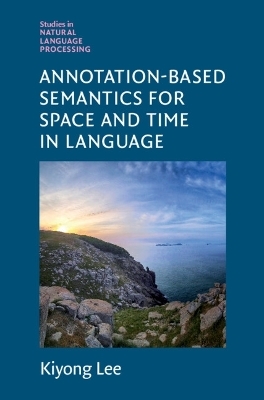
Annotation-Based Semantics for Space and Time in Language
Cambridge University Press (Verlag)
978-1-108-83959-4 (ISBN)
Space and time representation in language is important in linguistics and cognitive science research, as well as artificial intelligence applications like conversational robots and navigation systems. This book is the first for linguists and computer scientists that shows how to do model-theoretic semantics for temporal or spatial information in natural language, based on annotation structures. The book covers the entire cycle of developing a specification for annotation and the implementation of the model over the appropriate corpus for linguistic annotation. Its representation language is a type-theoretic, first-order logic in shallow semantics. Each interpretation model is delimited by a set of definitions of logical predicates used in semantic representations (e.g., past) or measuring expressions (e.g., counts or k). The counting function is then defined as a set and its cardinality, involving a universal quantification in a model. This definition then delineates a set of admissible models for interpretation.
Kiyong Lee is Professor Emeritus of Linguistics at Korea University in Seoul. He was President of the Linguistic Society of Korea and the Korean Society for Cognitive Science, and has worked on creating standards for semantic annotation as an ISO working group Convenor and Project Leader. In 1974, he published his University of Texas at Austin dissertation, On Montague Grammar. His published works include Computational Morphology and a three-volume book, Language and the World: Formal Semantics; Tense and Modality: Possible-Worlds Semantics; and Situation and Information: Situation Semantics.
Foreword; Preface; Acknowledgments; Part I. Fundamentals: 1. What is a semantic annotation?; 2. Data segmentation; 3. Modeling a semantic annotation scheme; 4. Representation and serialization; 5. What does semantics do for annotation?; 6. Annotation-based semantics; Part II. Time and Events: 7. Temporal ontology; 8. Normalizing TimeML with some modifications; 9. Extending the range of temporal annotation; 10. Proper interpretation of temporal relators; Part III. Motion Space, and Time: 11. ISO-Space evolving from SpatialML; 12. Dynamic paths, projection, and orientation; 13. Toward a dynamic annotation scheme.
| Erscheinungsdatum | 17.07.2023 |
|---|---|
| Reihe/Serie | Studies in Natural Language Processing |
| Zusatzinfo | Worked examples or Exercises |
| Verlagsort | Cambridge |
| Sprache | englisch |
| Maße | 152 x 229 mm |
| Gewicht | 818 g |
| Themenwelt | Geisteswissenschaften ► Sprach- / Literaturwissenschaft ► Sprachwissenschaft |
| Informatik ► Theorie / Studium ► Künstliche Intelligenz / Robotik | |
| ISBN-10 | 1-108-83959-2 / 1108839592 |
| ISBN-13 | 978-1-108-83959-4 / 9781108839594 |
| Zustand | Neuware |
| Informationen gemäß Produktsicherheitsverordnung (GPSR) | |
| Haben Sie eine Frage zum Produkt? |
aus dem Bereich


